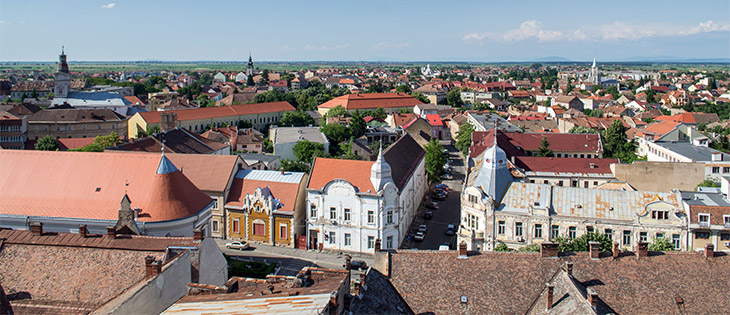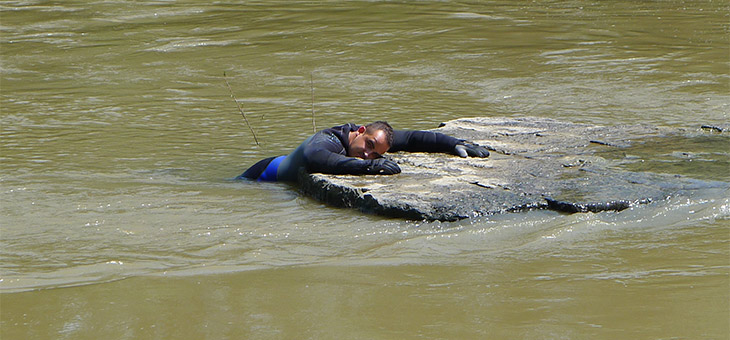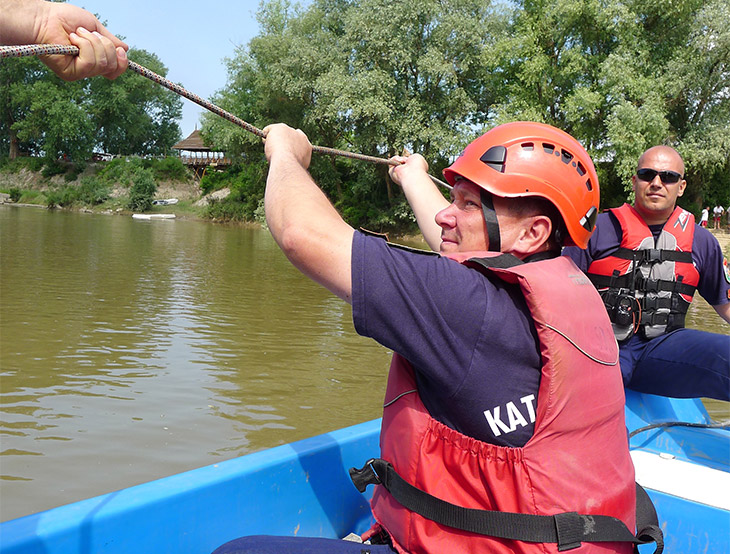Disaster preparedness training on the Hungarian/Romanian border
Editorial Advisory Panel Member Christo Motz is part of a European-funded disaster preparedness programme to strengthen cross border and inter-sector operability. This is his report.

I arrived in Satu Mare, a city about 13 km from the Hungarian border on Thursday afternoon. As Romania is not yet part of the Schengen Agreement, my passport was checked at the border.
Satu Mare is a city of about 115,000 inhabitants in the northwest part of Romania in the region of Maramures on the river Szamos/Somes; the Ukrainian border is about 27km north of the city.
Satu Mare is located between Hungary and Siebenbürgen, Transylvania. The historical centre and its decrepit but beautiful buildings from the Austro-Hungarian Monarchy are striking. But it is the communist, concrete city council 'watchtower' from the Ceausescu era that dominates the city.
In Satu Mare I was picked up by Zsolt Csengeri, director of Agenda Setting srl, together with Szabolcs Fülöp, Multisalva Association, who had contracted me for activities within the EU-ECHO disaster preparedness programme START – Strengthening cross border and inter-sector operability.
This project aims to improve the disaster preparedness and strengthen the co-operation between the various professional and volunteer emergency services in the Hungarian-Romanian border region.
The participating organisations are:
-
Multisalva Association, Romania;
-
Felso Tiszavideki Buvar es Mento Egyesulet, Hungary;
-
Somes, the Emergency Situation Inspectorate, Satu Mare, Romania;
-
Szabolcs-Szatmar-Bereg megyei katasztrofavedelem, Hungary;
-
Red Cross Satu Mare, Romania;
-
Red Cross, Nyiregyhaza, Hungary; and
-
Caritas Association, Romania.
For the coming six months it is my task as external consultant from Fylgjur to advise how the operational and strategic aspects can be supported and strengthened. I will blog and write about this process for the Crisis Response Journal and my conclusions and recommendations will be presented to my clients.

The operational collaboration in this border region should be improved as soon as possible. Both countries are increasingly vulnerable to the effects of climate change, including heavy rainfall, flooding, ice, snowstorms and drought, resulting in the breakdown of critical infrastructure and all of its attendant consequences.
To support and achieve this, yesterday and today a two-day preparatory training was given at the Szamos river near the Hungarian border town Csenger for around forty participants.
With such beautiful weather it is hard to image dire straits. Numerous poppies and cornflowers display their beautiful colours, birds are singing and birds of prey skim the fields searching for easy prey.
But in winter heavy snowstorms batter the countryside and in spring masses of water flow down the mountains from Ukraine and there is little time for this low-lying country to respond. This is why contacts and procedures need to be aligned and everyone has to be prepared to the utmost.

To provide effective advice it is essential to map the structures of the participating organisations: What is their expertise, how do the communication lines run and who has what authority?
I mainly asked questions and listened to what the people and organisations told me.
It is essential to support first responders/rescue workers and relief organisations in this process of co-operation, whereby their own responsibility, (self) empowerment, common values and goals are defined and internalised. This is what I contribute to.
Expect the unexpected
It is more important than ever that professional and volunteer first responders/rescue workers be prepared for the ‘unexpected’, the ‘unusual’ and the ‘unlikely’ as it is difficult to imagine what could happen to us in the near future. Physical, mental and technical preparedness are essential. To be able to act flexibly in the case of extreme scenarios we need to have a proactive attitude, to be able to think ahead and to practise using disaster scenarios from ‘outside of the box’. Nothing is too crazy in this regard.
The goal is to disrupt, to decode and thus to develop a counter-fragility within the aid organisations and their individual members, combined with a self-regenerating and improving structure.
While speaking with Laszlo Gyenge, a Hungarian Civil Protection Officer, he told me that on March 15, 2013, a raging windstorm caused a breakdown of critical infrastructure cutting electricity to over 69 villages. In other regions people were trapped in their vehicles by snow and it took days before everyone could be rescued. The knowledge and the experience are available, but can the mindset, consciousness and awareness be heightened and attuned in such situations?
It soon became clear that the Hungarian and Romanian organisations have a long-standing traditional hierarchical structure. Anyone in a lower echelon must request permission for any action first. The Romanians are required to contact headquarters in Bucharest and to wait for received permission before taking any action. This could cause difficulty if communication lines are down owing to a blackout/power outage. In this case the local governor in Satu Mare is to take charge.
I understand that this bureaucracy is very persistent. Furthermore it is not permitted to cross the river, as the Schengen Agreement has not yet been approved.
Naturally this complicates matters, especially in winter, but also in other times of emergency.
In my opinion one of the key elements is the available flexibility within the command and control structure. In regular mission command, local commanders and troops will receive the mandate to act autonomously and use their own insight within a certain range in order for an emergency situation to be effectively addressed.
During these two days a number of points of attention arose that can be used to prepare the upcoming exercise, the results of which I will include in an article.
Disaster Scenario
On Friday June 12, 2015, a large scale disaster exercise will take place in this region wherein a breach in an embankment will cause a ‘mass casualty scenario’. Over 300 first responders, ‘victims/patients’ and supporting personnel will take part in this.

In the next few days I will travel with Adam, a Romanian German, through Siebenbürgen, Transylvania, an area where around 1,200 mainly Schwabian and Saxon tradesmen, farmers and labourers have settled in to protect the Eastern border of Hungary. I look forward to finding medieval remains of German settlements, cities, castles and churches.
Christo Motz is a Member of CRJ's Editorial Advisory Panel
Christo Motz, 17/06/2015